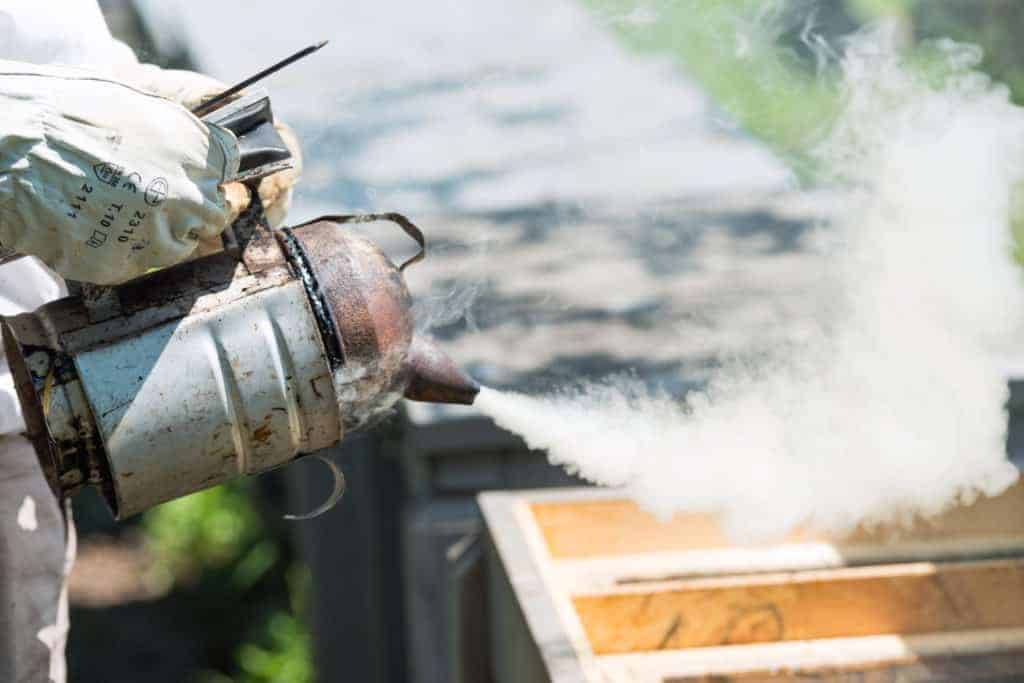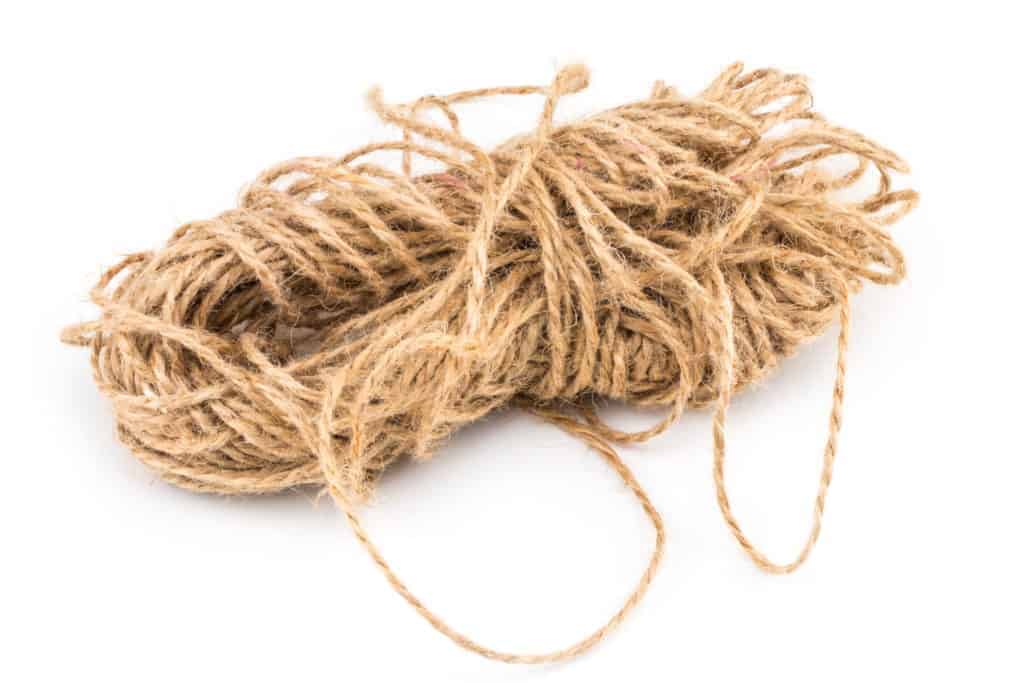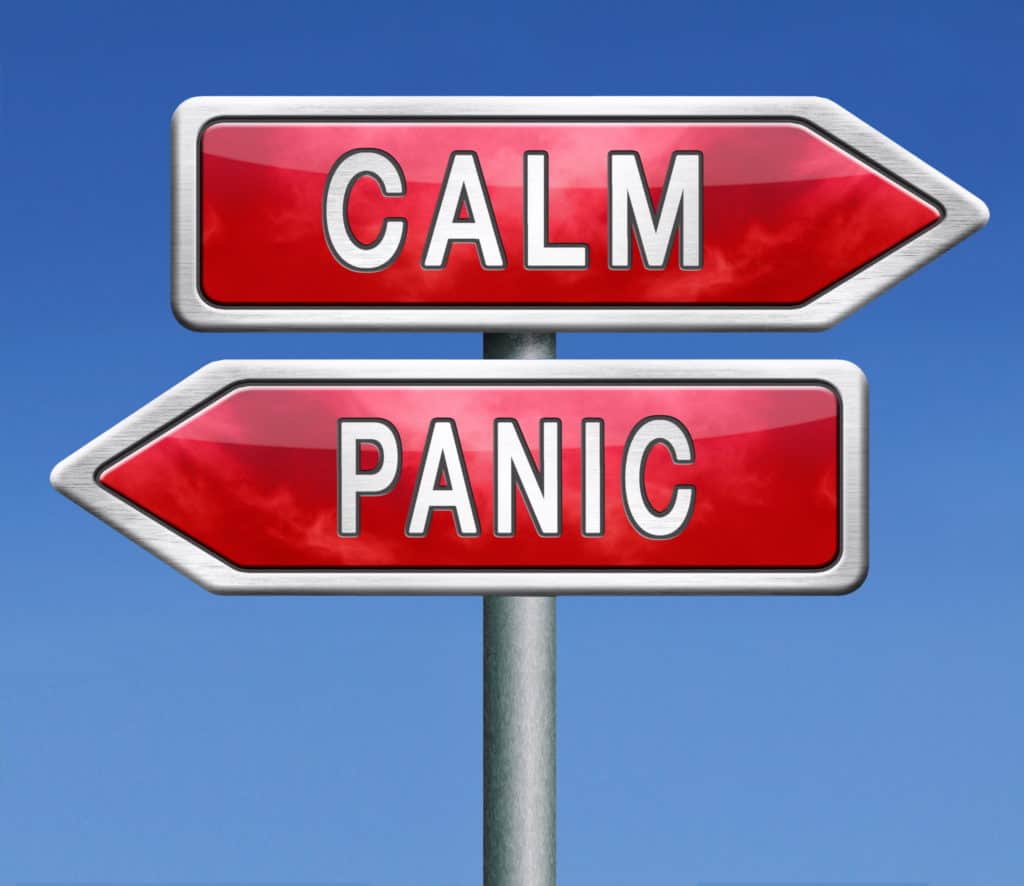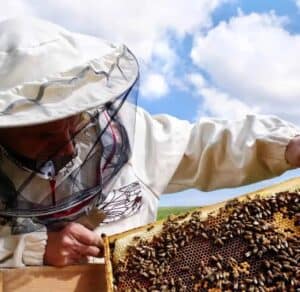What Kind Of Smoke Is Best For Calming Bees? Is It Harmful?
Honeybees are gentle insects until you open their hive and start poking around. Using smoke while working bees is a safe and long-established practice that has been used for centuries. But, what kind of smoke and fuel should you use?
Smoker fuel that produces a nice cool, light smoke and will burn for long time is great for calming bees. Materials such as cotton fuel pellets, wood chips, untreated burlap, and untreated baling twine are easy to light, burn slowly and are very affordable. Not to mention, bee and environmentally friendly.
There’s a wide variety of opinions between beekeepers who always use smoke when working bees and those who never use it. Beekeepers have been using smoke since the advent of beekeeping. Upon further research I’ve discovered several best practices when choosing the best fuel for your bee smoker.
Producing The Best Smoke To Calm Bees

Using smoke when working your bees interferes with the bee’s sense of smell. The smoke masks the alarm pheromone released by bees when they think their hive is under attack. This allows you to safely inspect and handle the frames with far less stings and unhappy bees.
The effect is reversable and the responsiveness of the bee’s antennae returns within 10-20 mins. Using smoke is a safe, time honored, effective and inexpensive method when handling your bees.
Making the decision on what fuel to use in your smoker will depend on several factors such as: cost, safety, practicality, and availability. There is a wide variety of safe fuel options that you can buy from beekeeping supply companies or you can spend the time finding and drying your own materials.
Some beekeepers and hobbyist prefer to locate and dry their own material, but this can be quite time consuming. If you prefer this option, the best materials will contain a high oil content which will keep the smoke billowing. Natural materials such as pine needles, dried citrus peels, dried herbs (mint, sage, basil, lavender, oregano) mixed with brown paper, small twigs, cotton and straw work very well.

You can also use dried sunflowers, daisies and zinnias. The only drawback is the amount of time it takes to prepare your material and it also tends to burn quickly. If you’re inspecting hives for an extended period, expect to bring extra fuel for your bee smoker. Some beekeepers believe using these materials is also medicinally beneficial for the bees.
Do not use any type of synthetic material or plastics in your bee smoker. Burning this type of material is not safe for humans or animals let alone your honeybees. Using lighter fluids, gasoline, kerosene or any other flammable liquid is a very bad idea since they produce noxious gasses and smoke. These materials will not only harm your bees but likely kill them.
Gathering your own fuel materials and preparing them is generally not a practical option for most beekeepers especially commercial operators. Most beekeepers just don’t have the time to do this. I would recommend using untreated baler twine, untreated wood chips, untreated burlap or cotton fuel pellets for your smoker. They are an inexpensive option that create a nice light smoke, are safe for your bees and beekeeper, and burn slowly.
The Best Fuels For Your Bee Smoker

You have a wide variety of options when choosing your fuel, I’ve described the more common ones below:
Smoker Fuel Pellets – these usually contain high density cotton fibers which produce a nice cool, light smoke and burn for long time. It is recommended to use a starter such as newspaper to get your pellets smoldering.
A one-pound bag of pellets cost around $4.00 US and can be found at any beekeeping supply store.
Untreated Burlap – is one of the most popular smoker fuels used by beekeepers. It comes is a roll and produces a light cool smoke but does tend to burn quicker than pellets. If your going to be at your bee yard for a long time, make sure and bring extra.
A nine-pound roll of burlap costs around $23.00 US and is also found at any beekeeping supply store.
Wood Chips – is also a very popular option for beekeepers but be careful what type of wood you use. If you use the wrong wood, it could burn to hot for your smoker. Also, never use sawdust or wood chips from a lumber mill because this wood could be treated with wood preservative.
A five-pound bag of wood chips costs around $5.00 US and a forty-pound bag is around $12.00 US and available at all beekeeping supply stores.
Untreated Baling Twin – this is by far the best fuel for long trips at the bee yard. Always use untreated baling twine and avoid the common plastic twine that most farms use. Place crumpled newspaper in the bottom of the smoker, light it, then place a coil of twine on top and repeatedly compress the smoker bellows. Your twine will smolder for a very long time.
A 300-foot roll of untreated baler twine costs around $25.00 US and is also available at beekeeping and farm supply stores. A roll of twine will last you a very long time.
Grasses, Pine Needles, Leaves & Plants – these are preferred by hobbyists who have time to gather and dry the materials. Although they are easy to light, these materials tend to burn quickly and not last very long. You will need to bring quite a bit with you if your going to be inspecting hives for any length of time.
This is not the most practical option for beekeepers with a lot of hives especially commercial operations.
Here’s a full breakdown of smoker fuels in an article I wrote about the 12 best fuels for your beehive smoker I also encourage you to read!
How To Calm Bees Without Smoke

Most beekeepers don’t believe this is a good idea and I would never recommend this practice either. Smoking is a well-established practice that’s been used for centuries with no negative consequences on honeybees.
But some hobbyist preference is to avoid using smoke while others are simply hyperallergic to it. Some beekeepers believe that smoke may compromise the honey’s taste and really don’t like the strong odour of the smoke. There has been no research to indicate that the use of smoke on your bees has any negative impact on honey production or flavour.
If you’re not going to use a smoker make sure you inspect your hives at the most ideal time of the day and weather conditions. The best time to inspect your hives is on calm, warm and sunny day between 11am and 4pm. The forager bees will be out working rather than guarding the hive.
Also, wear light colored protective clothing that has been washed to ensure removal of any alarm pheromones left from previous inspections. Don’t block the hive entrance and move calmly, slowly and deliberately as you inspect your hives. Lastly, be very careful to not crush bees, this will increase the release of alarm pheromones and stinging.
An alternative to smoke is different forms of sprays. Beekeepers will use plain water, sugar water or even lemon grass oil with spearmint. Beekeepers apply a light spray the inside walls of the hive. I don’t know how effective this method is, but some beekeepers claim this works well.
Related Questions
Do Honeybees Sleep? Forager bees sleep between five to eight hours per day. Forager bees will often sleep during day-night cycles and get more sleep at night when they are unable to leave the hive to collect pollen and nectar. Younger bees will only have frequent and short naps throughout the day.
Do honeybees die after stinging? Sadly, a sting results in a death of a honeybee. The stinger on a honeybee is barbed, and the bee’s body is not strong enough to pull the stinger out of your skin. Instead, part of the bee’s abdomen and digestive track is pulled away and kills the bee.
Does smoke make bees go away? Smoking bees only masks the alarm pheromone emitted by guard bees to allow beekeepers to inspect hives safely. Smoking an established hive will cause bees to gorge themselves in honey in case they have to relocate the hive due to fire. No amount of smoke will make the bees abandon their hive.

Joseph Davis
My goal is to show that anyone can take up beekeeping and it can be a very rewarding hobby. I strive to share my experiences and answer any questions you may have.
